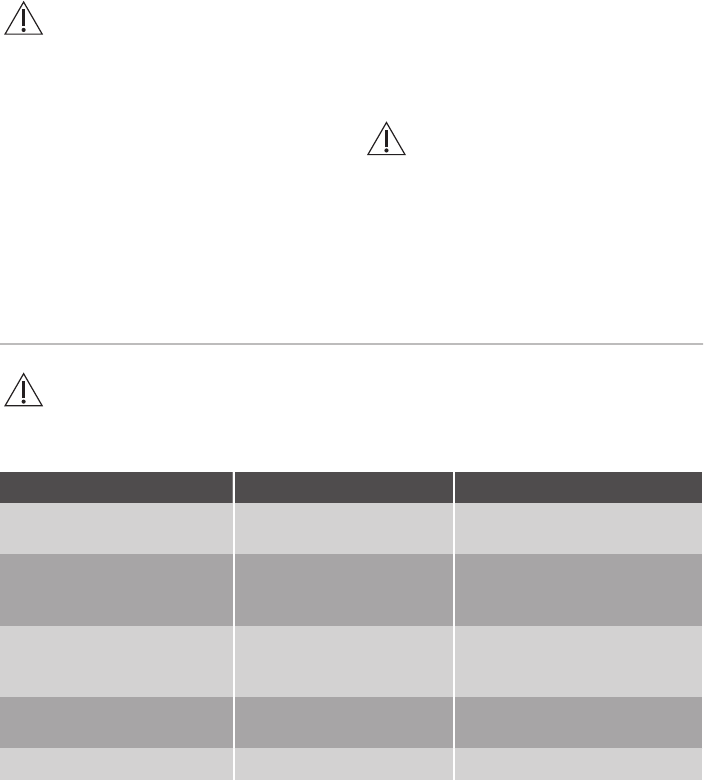User manual
Table Of Contents
- CONTENTS
- SAFETY INFORMATION
- SAFETY INSTRUCTIONS
- OPERATION
- DAILY USE
- HINTS AND TIPS
- CARE AND CLEANING
- TROUBLESHOOTING
- INSTALLATION
- NOISES
- TECHNICAL DATA
- TABLE DES MATIÈRES
- INFORMATIONS DE SÉCURITÉ
- CONSIGNES DE SÉCURITÉ
- FONCTIONNEMENT
- UTILISATION QUOTIDIENNE
- CONSEILS
- ENTRETIEN ET NETTOYAGE
- EN CAS D'ANOMALIE DE FONCTIONNEMENT
- INSTALLATION
- BRUITS
- CARACTÉRISTIQUES TECHNIQUES
- INHALTSVERZEICHNIS
- SICHERHEITSHINWEISE
- SICHERHEITSANWEISUNGEN
- BETRIEB
- TÄGLICHER GEBRAUCH
- TIPPS UND HINWEISE
- REINIGUNG UND PFLEGE
- FEHLERSUCHE
- MONTAGE
- GERÄUSCHE
- TECHNISCHE DATEN

A certain amount of frost will always form
on the freezer shelves and around the top
compartment.
Defrost the freezer when the frost layer
reaches a thickness of about 3-5 mm.
1. Switch off the appliance, or pull out the
electrical plug from the wall socket.
2. Remove any stored food, wrap it in
several layers of newspaper and put it
in a cool place.
WARNING! Do not touch
frozen food with wet hands.
Hands can freeze to the
goods.
3. Leave the door open and protect the
floor from the defrosting water e.g. with
a cloth or a flat vessel.
In order to speed up the defrosting
process, place a pot of warm water in
the freezer compartment. In addition,
remove pieces of ice with an ice
scraper before defrosting is complete.
4. When defrosting is completed, dry the
interior thoroughly and keep the
scraper for future use.
5. Switch on the appliance.
Wait at least 3 hours before putting the
food back into the freezer compartment.
Periods of non-operation
When the appliance is not in use for long
periods, take the following precautions:
1. Disconnect the appliance from
electricity supply.
2. Remove all food.
3. Defrost (if necessary) and clean the
appliance and all accessories.
4. Clean the appliance and all
accessories.
5. Leave the door/doors open to prevent
unpleasant smells.
WARNING! If you want to keep
the appliance switched on, ask
somebody to check it once in a
while to prevent the food inside
from spoiling in case of a
power failure.
TROUBLESHOOTING
WARNING! Refer to Safety
chapters.
What to do if...
Problem Possible cause Solution
The appliance does not op‐
erate.
The appliance is switched
off.
Switch on the appliance.
The mains plug is not con‐
nected to the mains sock‐
et correctly.
Connect the mains plug to the
mains socket correctly.
There is no voltage in the
mains socket.
Connect a different electrical
appliance to the mains socket.
Contact a qualified electrician.
The appliance is noisy. The appliance is not sup‐
ported properly.
Check if the appliance stands
stable.
The lamp does not work. The lamp is in stand-by. Close and open the door.
10










